The genus Pseudanos was separated from Anostomus in 1980 due to numerous differences in the skeleton. At that time, the scientist in charge, Richard Winterbottom, assigned two already known species to the new genus – P. gracilis and P. trimaculatus – and another, which he described as new: P. irinae. The differences between P. trimaculatus and P. irinae are essentially in the coloration: P. irinae has a dark spot on each scale, P. trimaculatus a light one. P. irinae comes from the upper and middle Orinoco and the Essequibo River in Guyana, P. trimaculatus is found throughout the Amazon region. Despite the clearly recognizable differences, P. irinae is currently not recognized by most scientists and is listed as a synonym of P. trimaculatus. Two more species have been added since 1980: P. winterbottomi and P. varii. Both have no horizontal stripes on the back. P. winterbottomi has a broad, dark longitudinal band, P. varii looks like P. irinae without dorsal stripes.
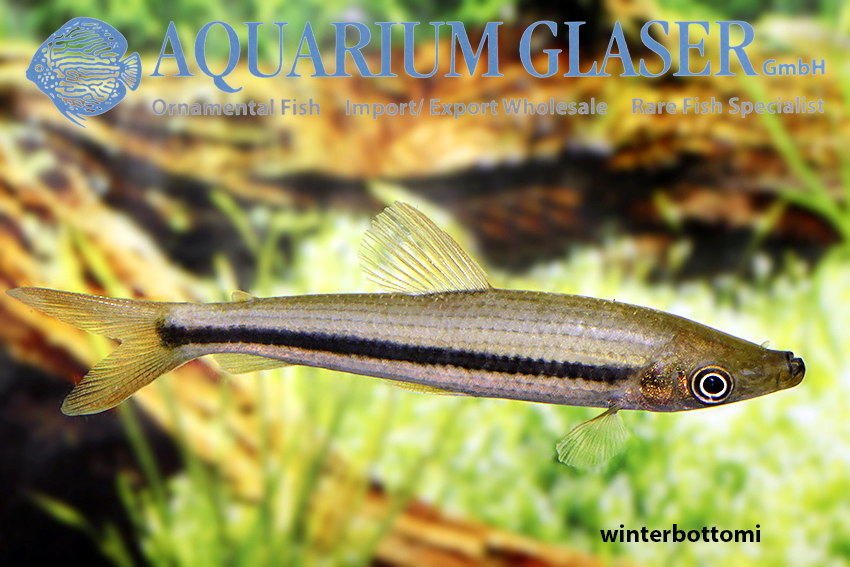
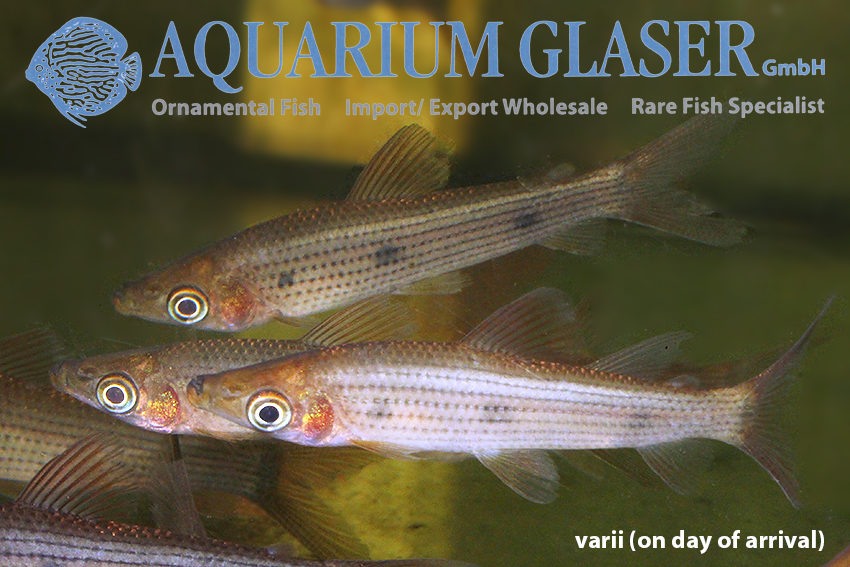
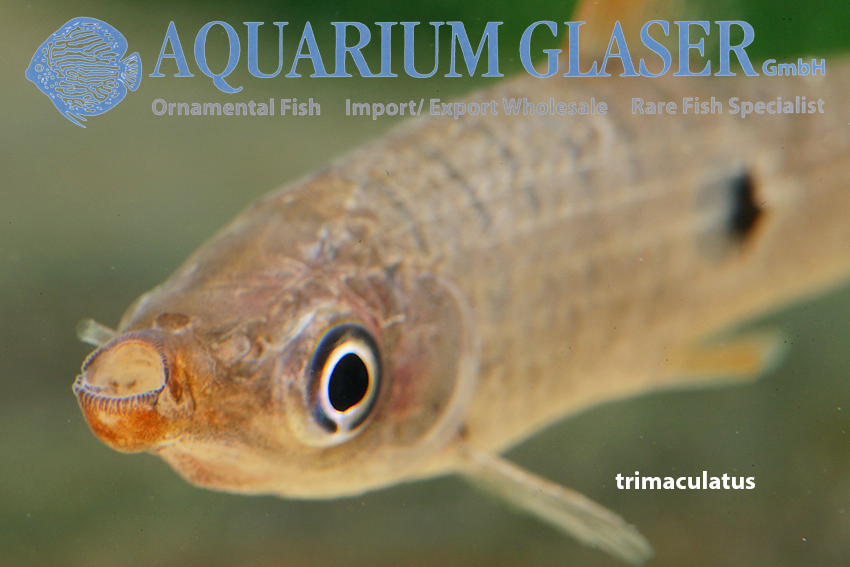
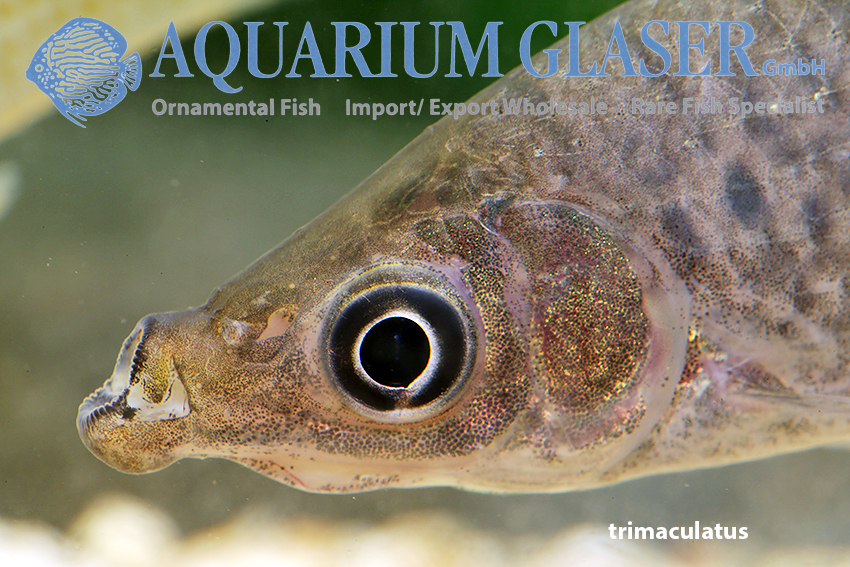
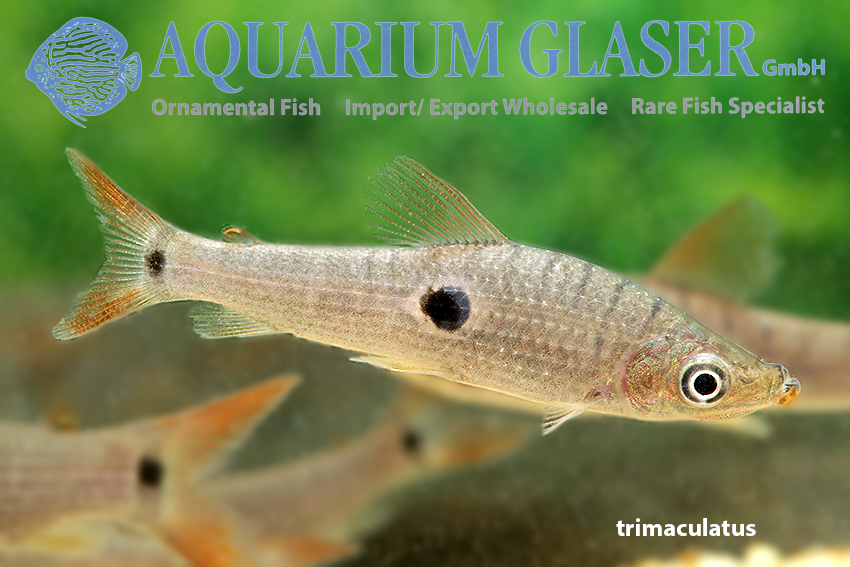
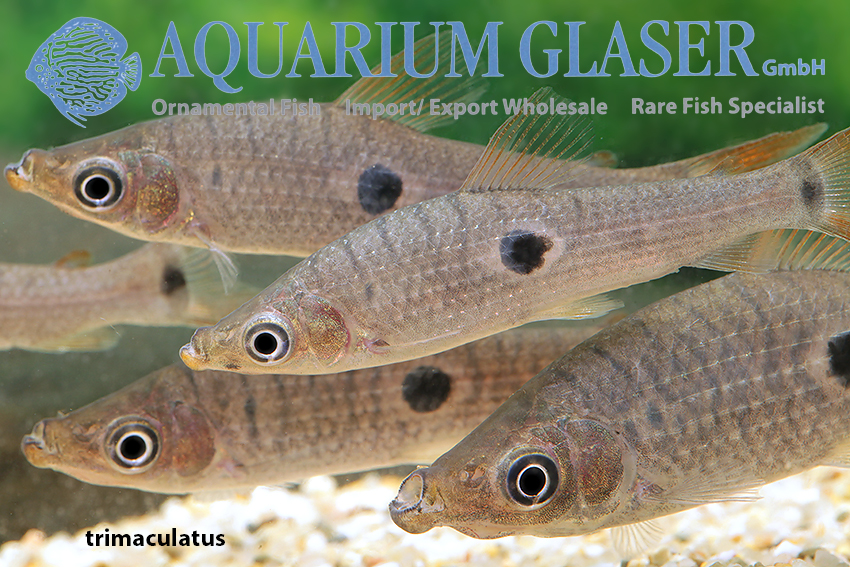
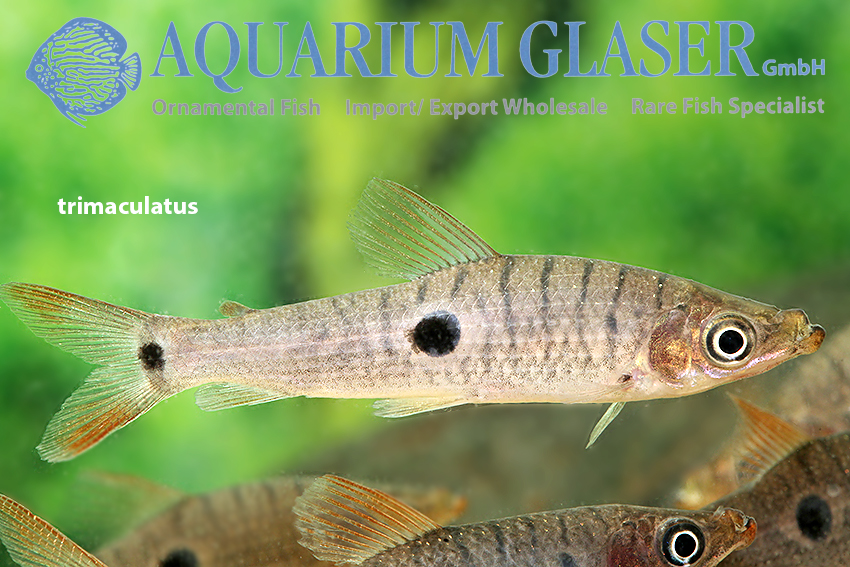
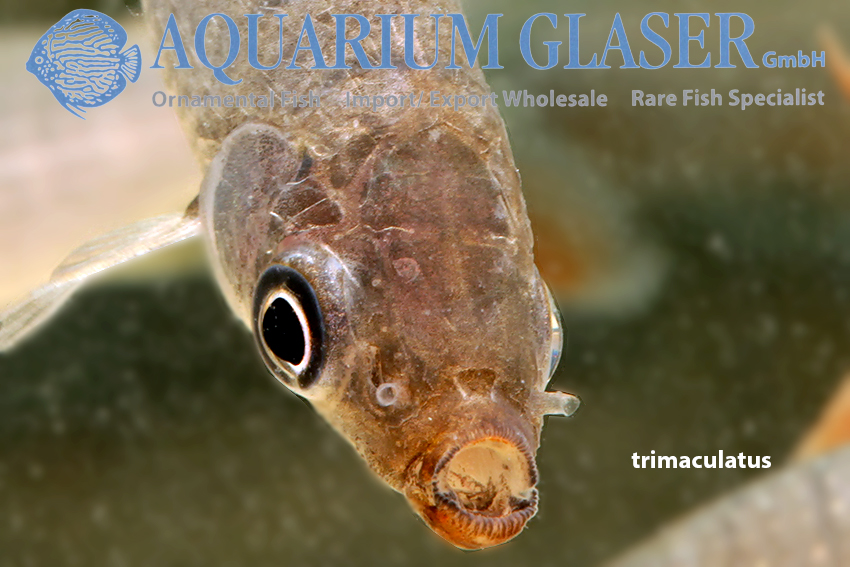
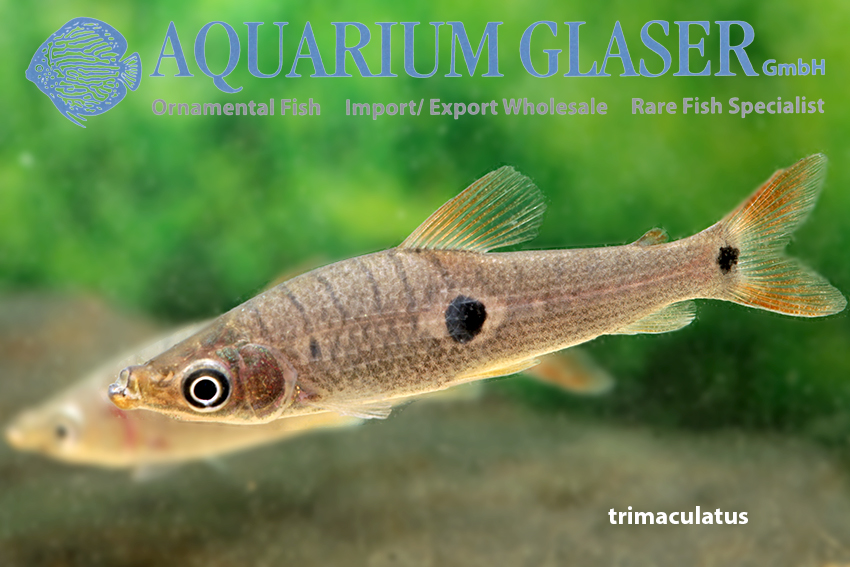
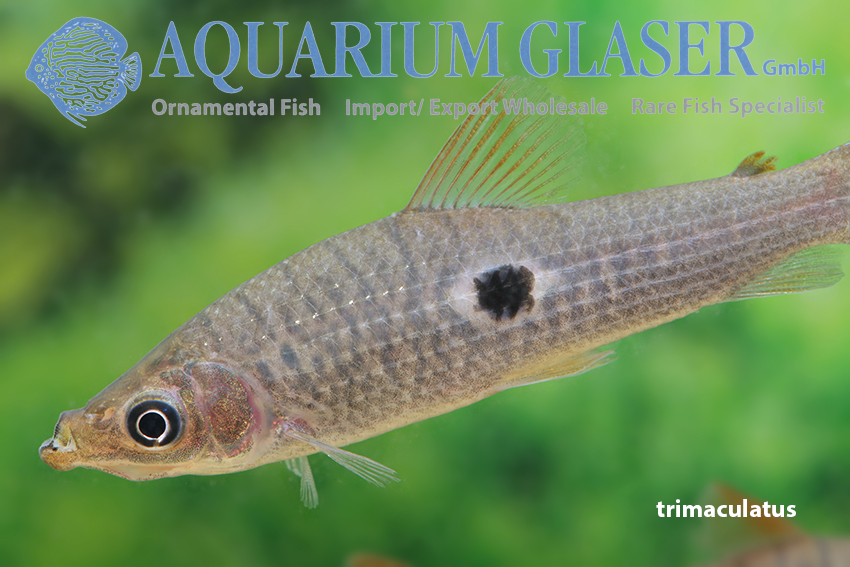
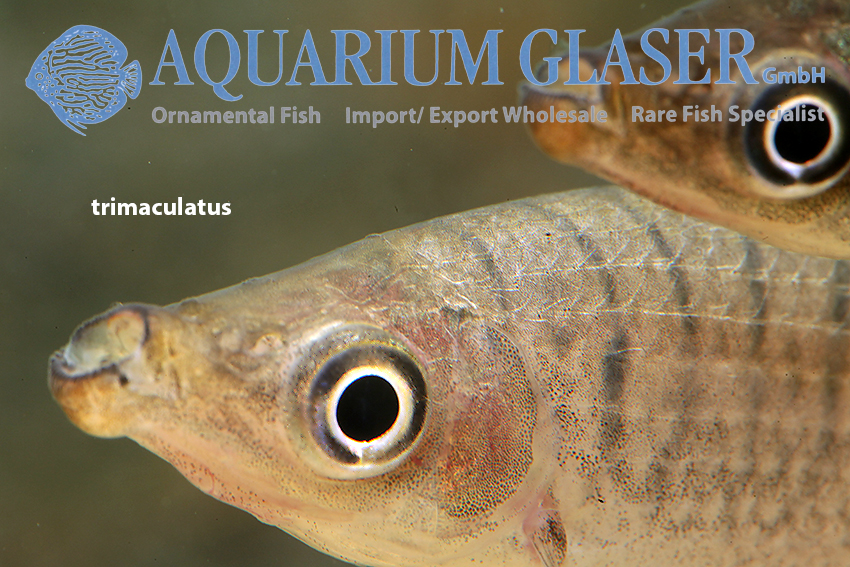
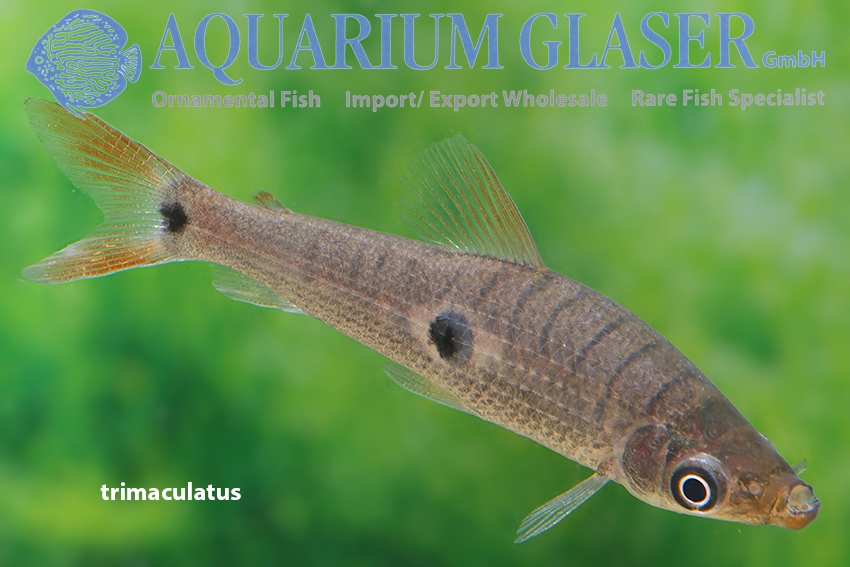
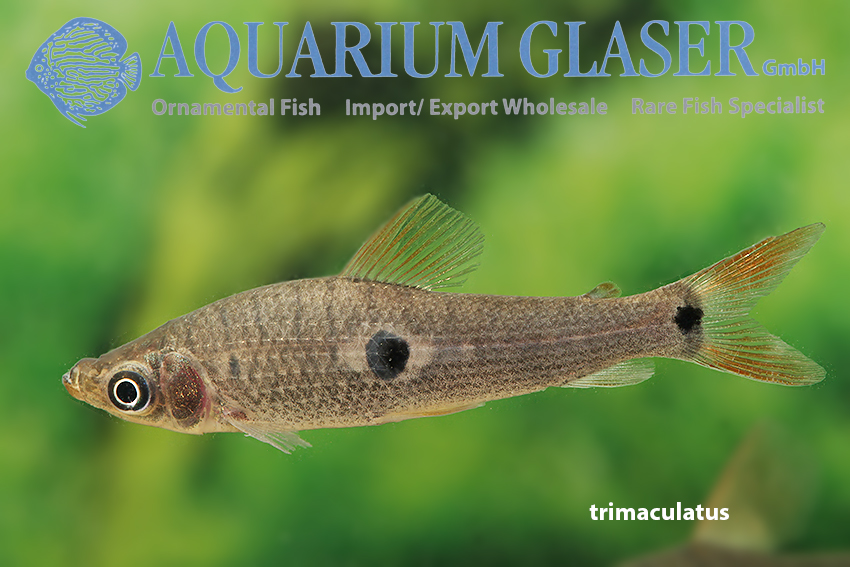
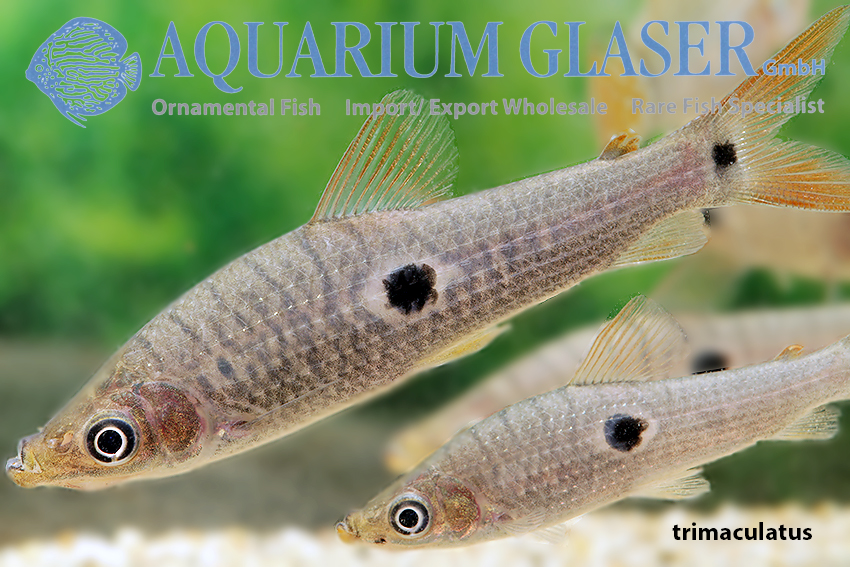
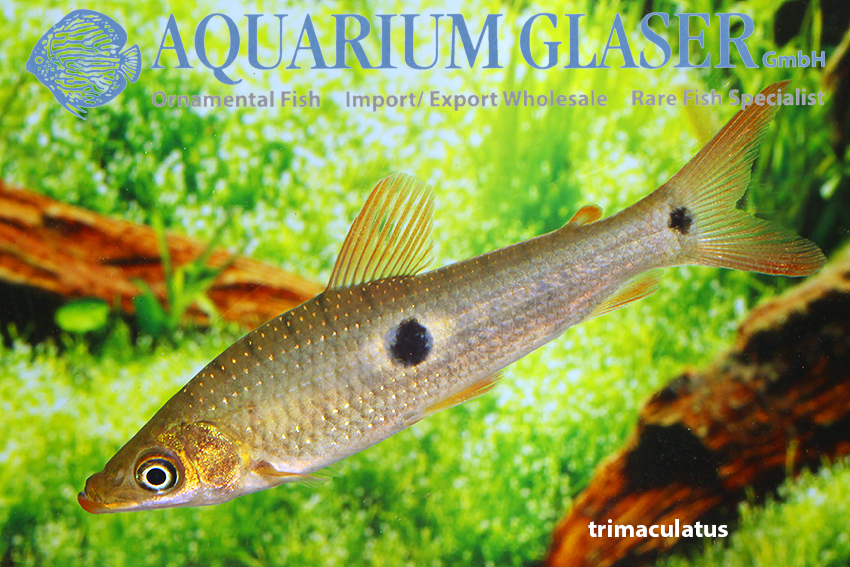
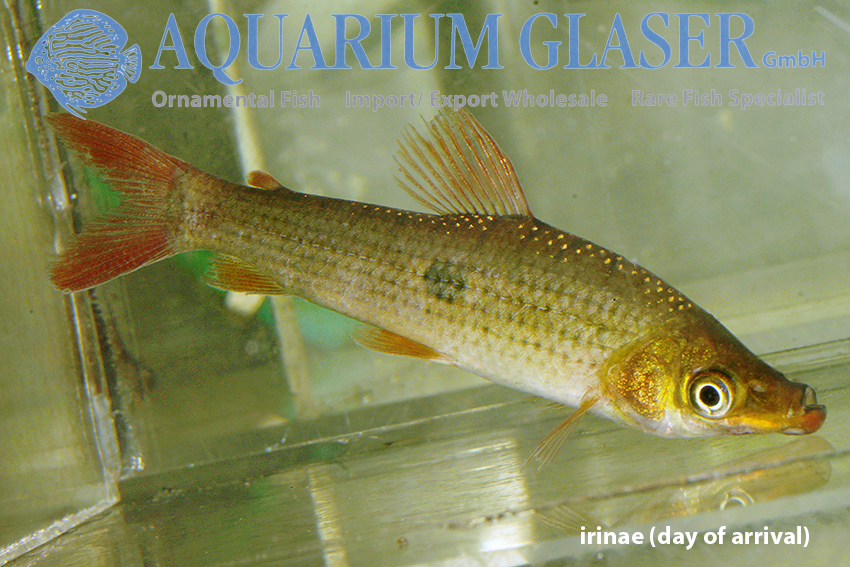
Pseudanos trimaculatus and P. irinae are, as already mentioned, easily distinguished from the other Pseudanos species by their horizontal dorsal stripes, which are missing in the latter. We have now once again received P. trimaculatus from Peru. They are very beautiful animals that can reach a length of about 12 cm. In contrast to other headstanders, which tend to be somewhat quarrelsome among themselves, the great peacefulness of P. trimaculatus is striking. According to the literature, delicate plants are part of the diet of these headstanders, so this should be taken into account when feeding them.
Obvious sexual differences are hardly recognizable, the presumed females are somewhat larger and fuller. Breeding reports on Pseudanos trimaculatus are still lacking, just as they are for any other Pseudanos species. Presumably, however, breeding has simply not yet been seriously attempted. It is to be expected that they are free spawners without brood care.
For our customers. P. trimaculatus has code 206103 on our stocklist. Please note that we only supply the wholesale trade.
Text & photos: Frank Schäfer




